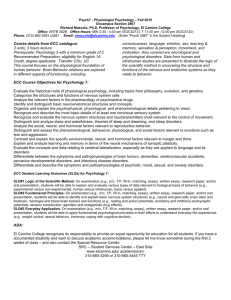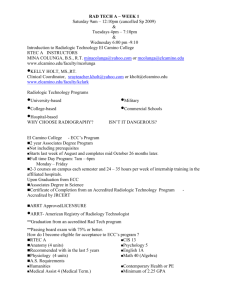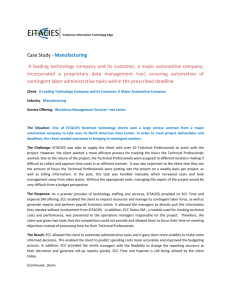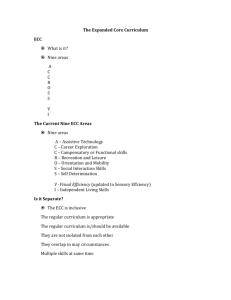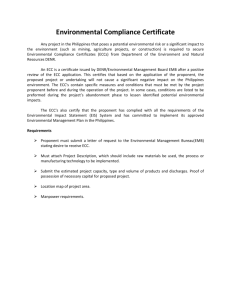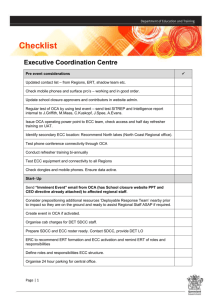Psychology 9A-Sociology 9
advertisement
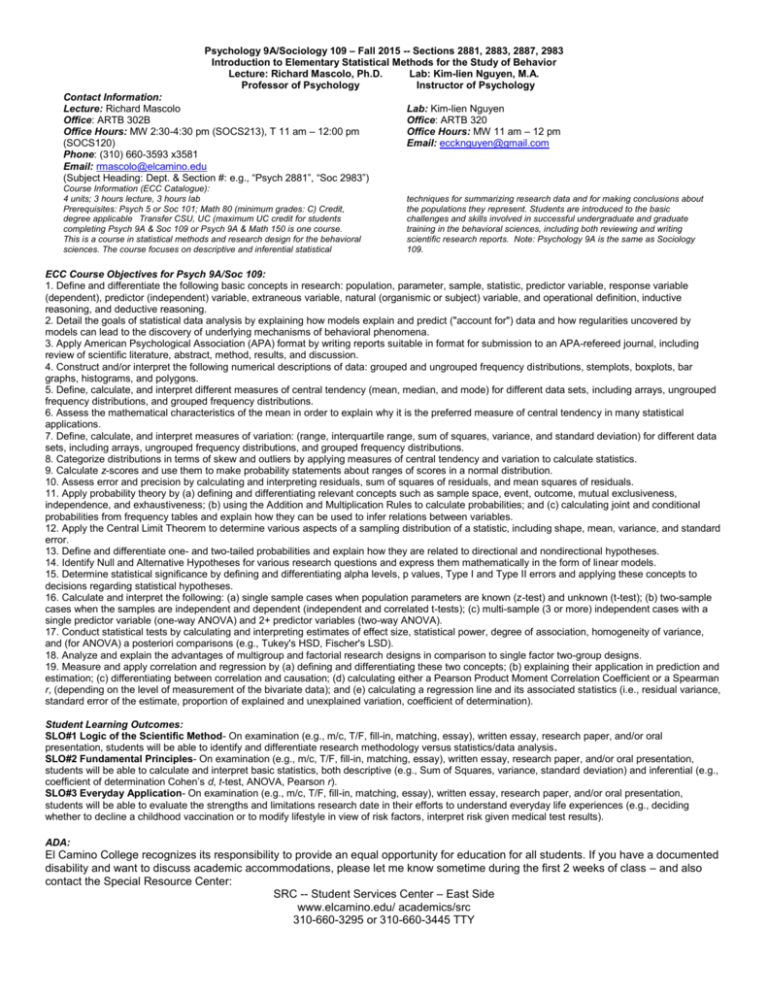
Psychology 9A/Sociology 109 – Fall 2015 -- Sections 2881, 2883, 2887, 2983 Introduction to Elementary Statistical Methods for the Study of Behavior Lecture: Richard Mascolo, Ph.D. Lab: Kim-lien Nguyen, M.A. Professor of Psychology Instructor of Psychology Contact Information: Lecture: Richard Mascolo Office: ARTB 302B Office Hours: MW 2:30-4:30 pm (SOCS213), T 11 am – 12:00 pm (SOCS120) Phone: (310) 660-3593 x3581 Email: rmascolo@elcamino.edu (Subject Heading: Dept. & Section #: e.g., “Psych 2881”, “Soc 2983”) Course Information (ECC Catalogue): 4 units; 3 hours lecture, 3 hours lab Prerequisites: Psych 5 or Soc 101; Math 80 (minimum grades: C) Credit, degree applicable Transfer CSU, UC (maximum UC credit for students completing Psych 9A & Soc 109 or Psych 9A & Math 150 is one course. This is a course in statistical methods and research design for the behavioral sciences. The course focuses on descriptive and inferential statistical Lab: Kim-lien Nguyen Office: ARTB 320 Office Hours: MW 11 am – 12 pm Email: eccknguyen@gmail.com techniques for summarizing research data and for making conclusions about the populations they represent. Students are introduced to the basic challenges and skills involved in successful undergraduate and graduate training in the behavioral sciences, including both reviewing and writing scientific research reports. Note: Psychology 9A is the same as Sociology 109. ECC Course Objectives for Psych 9A/Soc 109: 1. Define and differentiate the following basic concepts in research: population, parameter, sample, statistic, predictor variable, response variable (dependent), predictor (independent) variable, extraneous variable, natural (organismic or subject) variable, and operational definition, inductive reasoning, and deductive reasoning. 2. Detail the goals of statistical data analysis by explaining how models explain and predict ("account for") data and how regularities uncovered by models can lead to the discovery of underlying mechanisms of behavioral phenomena. 3. Apply American Psychological Association (APA) format by writing reports suitable in format for submission to an APA-refereed journal, including review of scientific literature, abstract, method, results, and discussion. 4. Construct and/or interpret the following numerical descriptions of data: grouped and ungrouped frequency distributions, stemplots, boxplots, bar graphs, histograms, and polygons. 5. Define, calculate, and interpret different measures of central tendency (mean, median, and mode) for different data sets, including arrays, ungrouped frequency distributions, and grouped frequency distributions. 6. Assess the mathematical characteristics of the mean in order to explain why it is the preferred measure of central tendency in many statistical applications. 7. Define, calculate, and interpret measures of variation: (range, interquartile range, sum of squares, variance, and standard deviation) for different data sets, including arrays, ungrouped frequency distributions, and grouped frequency distributions. 8. Categorize distributions in terms of skew and outliers by applying measures of central tendency and variation to calculate statistics. 9. Calculate z-scores and use them to make probability statements about ranges of scores in a normal distribution. 10. Assess error and precision by calculating and interpreting residuals, sum of squares of residuals, and mean squares of residuals. 11. Apply probability theory by (a) defining and differentiating relevant concepts such as sample space, event, outcome, mutual exclusiveness, independence, and exhaustiveness; (b) using the Addition and Multiplication Rules to calculate probabilities; and (c) calculating joint and conditional probabilities from frequency tables and explain how they can be used to infer relations between variables. 12. Apply the Central Limit Theorem to determine various aspects of a sampling distribution of a statistic, including shape, mean, variance, and standard error. 13. Define and differentiate one- and two-tailed probabilities and explain how they are related to directional and nondirectional hypotheses. 14. Identify Null and Alternative Hypotheses for various research questions and express them mathematically in the form of linear models. 15. Determine statistical significance by defining and differentiating alpha levels, p values, Type I and Type II errors and applying these concepts to decisions regarding statistical hypotheses. 16. Calculate and interpret the following: (a) single sample cases when population parameters are known (z-test) and unknown (t-test); (b) two-sample cases when the samples are independent and dependent (independent and correlated t-tests); (c) multi-sample (3 or more) independent cases with a single predictor variable (one-way ANOVA) and 2+ predictor variables (two-way ANOVA). 17. Conduct statistical tests by calculating and interpreting estimates of effect size, statistical power, degree of association, homogeneity of variance, and (for ANOVA) a posteriori comparisons (e.g., Tukey's HSD, Fischer's LSD). 18. Analyze and explain the advantages of multigroup and factorial research designs in comparison to single factor two-group designs. 19. Measure and apply correlation and regression by (a) defining and differentiating these two concepts; (b) explaining their application in prediction and estimation; (c) differentiating between correlation and causation; (d) calculating either a Pearson Product Moment Correlation Coefficient or a Spearman r, (depending on the level of measurement of the bivariate data); and (e) calculating a regression line and its associated statistics (i.e., residual variance, standard error of the estimate, proportion of explained and unexplained variation, coefficient of determination). Student Learning Outcomes: SLO#1 Logic of the Scientific Method- On examination (e.g., m/c, T/F, fill-in, matching, essay), written essay, research paper, and/or oral presentation, students will be able to identify and differentiate research methodology versus statistics/data analysis. SLO#2 Fundamental Principles- On examination (e.g., m/c, T/F, fill-in, matching, essay), written essay, research paper, and/or oral presentation, students will be able to calculate and interpret basic statistics, both descriptive (e.g., Sum of Squares, variance, standard deviation) and inferential (e.g., coefficient of determination Cohen’s d, t-test, ANOVA, Pearson r). SLO#3 Everyday Application- On examination (e.g., m/c, T/F, fill-in, matching, essay), written essay, research paper, and/or oral presentation, students will be able to evaluate the strengths and limitations research date in their efforts to understand everyday life experiences (e.g., deciding whether to decline a childhood vaccination or to modify lifestyle in view of risk factors, interpret risk given medical test results). ADA: El Camino College recognizes its responsibility to provide an equal opportunity for education for all students. If you have a documented disability and want to discuss academic accommodations, please let me know sometime during the first 2 weeks of class – and also contact the Special Resource Center: SRC -- Student Services Center – East Side www.elcamino.edu/ academics/src 310-660-3295 or 310-660-3445 TTY Grading Basis: Lecture Grade (75% of Overall Grade): 3 Exams weighted equally (80%); haphazard quizzes (20%) Lab Grade (25% of Overall Grade): 2 APA-formatted research papers (80%); various lab homework/assignments/quizzes (20%) Required Texts & Materials: American Psychological Association. Publication Manual of the APA. Sixth edition, 2nd Printing, Washington, D.C. Lockhart, R. S. (1998) Introduction to Statistics & Data Analysis for the Behavioral Sciences. New York: W. H. Freeman & Company.* Wilkinson, L., & the Task Force on Statistical Inference. (1999). Statistical methods in psychology journals: Guidelines and explanations. American Psychologist, 54(8), 594-604.** Haig, B. D. (2000). Explaining the use of statistical methods. American Psychologist, 55(8), 962-963.** Calculator with basic functions and square root capability (statistical functions not required) * not carried by ECC Bookstore but no-cost downloads can be found on Mascolo’s ECC Faculty Webpage ** not carried by ECC Bookstore but no-cost downloads can be found on Web Lecture Chapter 1.1, 1.2*, 1.3 Chapter 2.1*, 2.2 Chapter 3.1, 3.2, 3.3 Lecture Exam #1 Chapter 4.1, 4.3, 4.4 Chapter 5.1, 5.2, 5.3 Chapter 6.1, 6.2, 6.3, 6.4, 6.5 Lecture Exam #2 Chapter 7.1, 7.2 Chapter 8.1.3, 8.2.1 Chapter 9.1, 9.3 Lecture Exam #3 *This Material will be covered in lab Lab Lab Paper #1: Lab Paper #2: Sections 2883, 2887, 2983 Section 2881 Monday, September 28 Tuesday, September 29 Wednesday, October 28 Thursday, October 29 Wednesday, December 9 Thursday, December 10 Sections 2881, 2887 Wednesday, November 4 Wednesday, December 2 Sections 2883, 2983 Thursday, November 5 Thursday, December 3 Course Policies: All student work must be written for this Fall 2015 semester – works written for other courses or previous semesters of this course are considered plagiarized and will receive 0 points. See APA Publication Manual for ethical guidelines for resubmission of one’s own work. Lecture Exam & Lab Paper due dates are listed above--assume these dates are valid unless notified otherwise by the professor. Students are responsible for keeping abreast of course announcements, including any changes in Due Dates or Exam Material. Study Guides are not provided; instead, students are expected to attend lectures in an active, purposeful way – thorough, thoughtful note taking in class will provide students with their own study guide. Course grades are determined solely by the requirements detailed in Grading Basis above. Extra credit is offered on Lecture Exams but is not invented to make up for failing scores throughout the semester. Each student should bring relevant text PDF & APA Publication Manual to all lecture & lab meetings. Students may be dropped if they are absent the 1st class meeting or 2 class meetings in the first 2 weeks Students may be dropped if they are disruptive (see ECC Policies below) Students may be offered an Incomplete grade notation only if they 1) meet the criteria detailed in the relevant ECC Policy below and 2) completed at least 1 of 3 Lecture Exams and 1 of 2 Lab Papers. No one is permitted to make video/audio recordings or take photographs during class or office hours. Students should independently confirm these important dates: Friday, September 4, 2015 is the last day to: 1) add full semester courses, 2) challenge residency status for current semester 3) drop for an enrollment fee refund (full semester classes); 3) drop without notation on permanent record. Friday, November 13, 2015 is the last day to drop with a “W”. ECC Policies: Students who enroll in class but do not attend the first scheduled class meeting may be dropped from the roster & their places given to waiting students who were unable to enroll at the time of registration. If illness or emergency prevents a student from attending the first class session, the student must contact the instructor. A student who registers for a class & never attends is still responsible for dropping the class. Failure to properly drop a class may result in a “W” & may subject the student for any & all fees associated with the class. Students will not be permitted to attend classes in which they are not enrolled. Exceptions may be allowed by the instructor for bonafide visitors. Students who attend a class without proper enrollment (the student did not properly register or add the class) by the published deadline will not be permitted to “late add” the class except for documented extenuating & mitigating circumstances. Students are expected to attend their classes regularly. Students who miss the first class meeting or who are not in regular attendance during the add period for the class may be dropped by the instructor. Students whose absences from a class exceed 10% of the scheduled class meeting time may be dropped by the instructor. However, students are responsible for dropping a class within the deadlines published in the class schedule. Students who stop attending but do not drop may still be retained on the course roster & receive a failing grade. Students may view their registration status on MyECC. If space is available, students who have completed registration may add a class by going to the first meeting of the class & securing permission of the instructor. It is the responsibility of the student to fulfill all requirements to add a course, & to add the course by the add deadline in accordance with college procedures. Adds will not be processed beyond the add deadline. Official withdrawal from class must be processed through the online system in the Admissions Office. Failure to complete this process may result in the assignment of a letter grade of A through F. It is the responsibility of the student to officially drop a class by the deadline date. A student may receive a notation of “I” (Incomplete) and a default grade when a student did not complete his or her academic work for unforeseeable, emergency, and justifiable reasons. The Incomplete grade to be assigned by the instructor and designated on the student’s transcript will be IB, IC, ID, or IF. Collectively, these grades will be referred to as an “I” grade. If the student does not complete the required work by the end of the sixth week, the “I” will automatically be removed and the default grade will be assigned. Any extension of the time for completion of the required work must be approved by the division dean. Student Code of Conduct http://www.elcamino.edu/administration/board/boarddocs/5500 Academic Honesty.pdf Student Rights & Grievances Procedure 5530 http://www.elcamino.edu/administration/board/policies.asp
